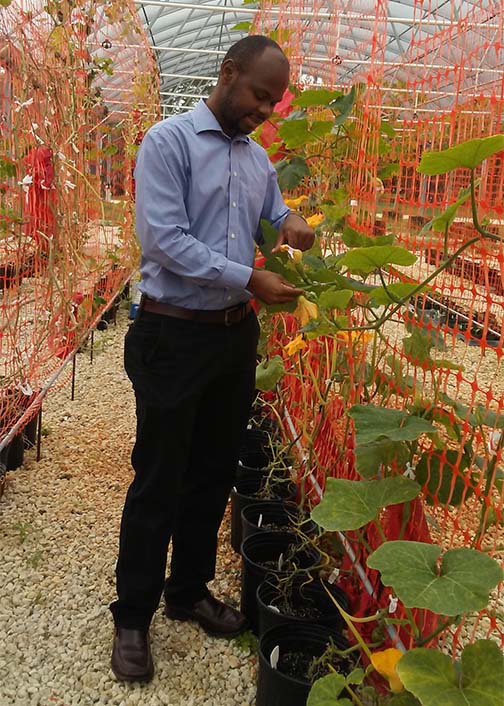MIAMI-DADE, Fla. – Attention Florida vegetable producers and homeowners: Don’t let the summer go by without trying your hand at producing the calabaza.
New crop on the block, Calabaza Pumpkin in Florida is the latest video led by Geoffrey Meru, a vegetable geneticist at the UF/IFAS Tropical Research and Education Center. The video guides homeowners and interested growers with the background and necessary steps to grow and produce a successful calabaza.

“The calabaza is a nutritional powerhouse that is easy to grow, is almost pest free, and is an excellent crop you can use in rotation with others,” said Meru. “It is adapted to Florida’s tropical climate with minimal irrigation requirements.”
For those farmers and homeowners not as familiar with calabaza, it is a summer squash that is grown extensively in Latin America and throughout the tropics and subtropics. The edible fruit is produced on vines that run up to 50 feet long.
In his calabaza research, Meru looks at the gourd as the next pumpkin of choice for those working in the brewing, food, agriculture, manufacturing and health industries. He received a two-year, nearly $400,00 grant from the U.S. Department of Agriculture. He will research whether the calabaza provides the best combination of profit, wider consumer demand and usefulness for multiple industries. In 1991, calabaza production in South Florida stood at about 2,500 acres, valued at more than $5 million.
Florida’s hot summers provide ideal conditions for homeowners and growers to start potting for vivacious vines that will produce several calabazas to enjoy.
If you live in Central or South Florida, June is a great time to start setting seeds in pots. If you’re looking for more specific information on what to plant and when, UF/IFAS provides a yearlong regional calendar website to reference that includes a South Florida Gardening Guide, a Central Florida Gardening Guide, and North Florida Gardening Guide.
Meru covers a wide range of areas in his video, including the origins and production of the calabaza, the current research on the crop, steps to locating seeds, breeding and growing calabazas, as well as how to monitor and manage disease and pest problems.









